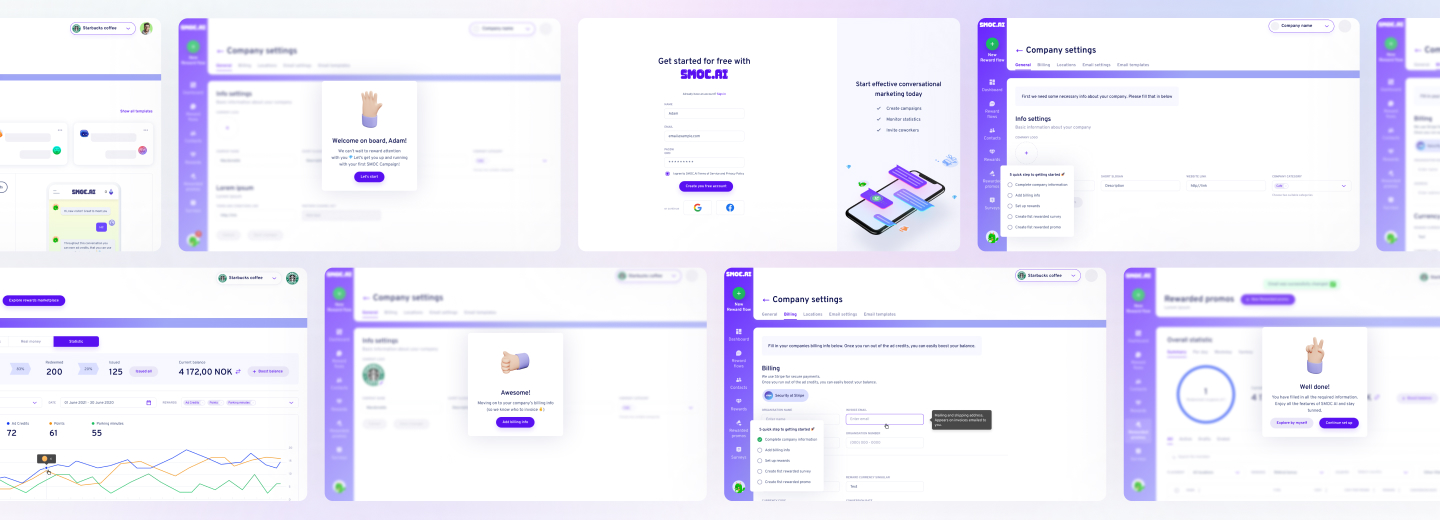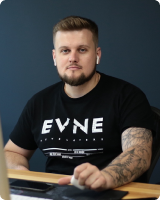Every founder asks me two questions before we sign a statement of work. How much will a PoC cost, and how quickly can we show it working? After a decade building and validating new products, I’ve learned that the right answer is specific, traceable, and surprisingly predictable once you break the problem into the right components. What follows is the same playbook my consulting team uses to scope, price, and deliver PoCs that secure budgets and board confidence to make proof of concept development.
Let’s dive deeper into the meaning of POC in development and try to calculate the prices for this kind of service.
WHAT'S IN THE ARTICLE
Proof of Concept (POC): Key Fundamentals
A PoC is a practical test of feasibility. It proves whether a product hypothesis, a technology choice, or a market assumption holds up when it meets reality. Instead of aiming for polished deliverables, we aim for proof that a core bet is sound.
Importance of a POC in Business Development
- Reduce risk: Validate a technical or market assumption before significant spend on a full build.
- Accelerate approval: Provide evidence that helps internal sponsors unlock budgets.
- Guide product design: Reveal must-have features, data needs, and process constraints.
- Align decision makers: Create a concrete artifact that sales, product, and engineering can evaluate together.
Here’s the hidden value. A strong PoC lowers your cost of capital. It gives investors and leadership clear evidence, reduces uncertainty, and shortens the time to a go or no-go call. That clarity is priceless for pocs business at different stages.
POC Compared to Prototype and MVP
- Prototype: Demonstrates look and feel. Often no back end. Great for user feedback, not for feasibility.
- Proof of Concept: Validates a core technical or operational assumption. Limited scope. Built to answer yes or no quickly.
- MVP: First usable product for real users. Must be deployable, supportable, and extensible.
Think of a proof of concept poc as a narrowly focused test with a success criterion you can measure. If the outcome is ambiguous, it wasn’t designed tightly enough. Try applying Startup Development Services to prove your ideas before product launch.

Looking to Build an MVP without worries about strategy planning?
EVNE Developers is a dedicated software development team with a product mindset.
We’ll be happy to help you turn your idea into life and successfully monetize it.
Major Factors Shaping the Cost of a POC
The range isn’t arbitrary. Most PoCs fall into clear bands because the cost drivers are consistent. Get these right in the scoping phase and you’ll buy time, predictability, and stakeholder trust.
Project Complexity
Aim for what’s essential. Pare down scope to the smallest set of screens and flows that communicate your unique value. This slice is often called the “minimum viable prototype.”
- Data complexity: Messy inputs, multiple formats, or uncertain data quality drive effort.
- Algorithmic complexity: Classic CRUD apps are cheaper than advanced AI or optimization tasks.
- Domain complexity: Healthcare, fintech, or embedded systems add compliance, security, and specialized testing.
Signal you can trust: If your core question needs a new algorithm or unusual hardware, plan for more senior hours upfront and more time in test cycles.
Development Tools & Technology Stack
Tooling choices affect both speed and cost.
- Managed cloud services shorten build time, often at higher run costs.
- Cutting-edge frameworks can move quickly but might lack stable libraries and talent availability.
- Established stacks reduce risk and debugging time, which is ideal for PoCs on tight timelines.
When your goal is feasibility, proven tools usually pay for themselves through fewer false starts. New tech for the sake of novelty is a cost multiplier.
Timeline & Delivery Expectations
Compress the schedule, increase the cost. A two-week sprint with a hard external deadline usually requires more senior engineers, longer hours, and risk mitigation steps.
Common patterns:
- Short deadline PoC with executive demo: Staff with senior engineers and a dedicated QA lead.
- Flexible timeline with internal audience: Use a blended team and progressively harden the build.
Clarity about success criteria and demo expectations is the easiest way to avoid rework. Surprise feature asks late in the schedule are the main reason PoCs run over budget.
Scope and Regulatory Requirements
Restricted data, audit trails, consent, and traceability add real weight to a build. Even for a PoC, healthcare, finance, and public sector work often require:
- Threat modeling and documented controls
- Data masking or synthetic data generation
- Security reviews and logging policies
This doesn’t mean the PoC must be production grade. It does mean we budget for the process and artifacts that let your compliance team say yes.
Number of Integrations
Each integration adds discovery, sandbox setup, schemas, credentials, edge cases, and time-boxed debugging. Third-party APIs that look “simple” often contain 20 percent surprises that you can’t rush.
Rules of thumb:
- Zero to one integration: Typical.
- Two to three integrations: Plan for extra QA time.
- Four or more: Treat integration as a core thread in the plan with its own test matrix.
Ongoing Testing & QA
Even for a PoC, structured testing saves money. We assign light but disciplined QA with automated smoke tests, fixtures, and scenario scripts. The point is not perfection. The point is reliability for the demo and a clean handoff into MVP planning.
Where QA pays off:
- Repeatable demo environments
- Metrics capture for the success criteria
- Faster bug isolation when stakeholders provide feedback
Infrastructure & Deployment Environment
Where will the PoC run? Local developer machines are cheap but limit stakeholder access. Cloud environments cost more but enable shared testing, data isolation, and realistic performance. For hardware PoCs, plan for labs, devices, and setup time.
A cloud environment with templates and IaC cut setup to hours, not days. It also makes the transition to MVP smoother.
Estimating PoC Costs
Clients ask for numbers. Here’s a structured way to calculate a credible estimate and defend it to a board or procurement team.
Cost of Manpower
Most PoC budgets are driven by people, not tools. A typical team:
- Tech lead or architect
- One to two software engineers
- QA engineer or SDET
- Product manager or business analyst
- DevOps or cloud support, part time
A scenario-based view helps anchor expectations.
| Scenario | Typical Team | Duration | Effort (person-weeks) | Blended Rate (USD/hr) | Estimated Cost (USD) |
| Data-driven PoC with one integration | Tech lead, 1 engineer, QA part-time, PM part-time | 3 to 4 weeks | 16 to 20 | 95 to 135 | 25,000 to 40,000 |
| Integrated web app PoC with auth and dashboards | Tech lead, 2 engineers, QA, PM | 5 to 7 weeks | 35 to 50 | 95 to 145 | 45,000 to 85,000 |
| Regulated AI PoC with 2 to 3 integrations | Architect, 2 engineers, QA, PM, DevOps | 6 to 10 weeks | 55 to 80 | 110 to 165 | 75,000 to 150,000 |
Adjust for your market rates, internal staffing, and whether you need senior-only coverage for speed or risk.
Cost of Technology and Tools
Direct costs vary with the plan:
- Cloud infrastructure: 300 to 4,000 for a short PoC, higher with GPUs or heavy data processing
- Data services: 500 to 5,000 for access, cleaning, or enrichment
- Licenses: 0 to 15,000 depending on proprietary SDKs or enterprise connectors
- Devices or kits: 500 to 10,000 for hardware or IoT
When teams ask to use bleeding-edge frameworks, I ask one question: does it reduce risk or increase risk for this PoC? If it increases risk, we pick stable proof of concept software that trades novelty for speed.
Miscellaneous Costs
A few line items often get missed in early budgets:
- Legal or compliance review for data use agreements
- Design assets or UX research sessions
- Travel for on-site demos or lab setup
- Data labeling or annotation for ML cases
- Executive-level packaging, slideware, and video walkthroughs
From a poc finance perspective, budget a cushion of 10 to 20 percent to absorb small surprises without change requests.
The Average Cost Range
Let’s translate all of this into the number you can brief to leadership.
- Small PoC with straightforward scope: 15,000 to 35,000
- Mid-level PoC with integrations and dashboards: 35,000 to 90,000
- Complex or regulated PoC, or AI with heavy data work: 90,000 to 200,000+
When founders ask about poc cost, I give a range based on scenario, then provide a one-page breakdown of drivers to prevent optimism bias. That single page saves more budget fights than any technical deep dive.
You’ll see articles quoting lower and higher poc prices. The difference usually comes down to hidden assumptions in scope, talent seniority, and the level of demo polish expected by stakeholders.
Timeframe
Most PoCs fit one of these windows:
- 2 to 3 weeks: Tight, single-question feasibility test
- 4 to 6 weeks: Standard for most B2B PoCs with one or two integrations
- 7 to 12 weeks: Complex integrations, AI with evaluation pipelines, or regulated environments
The fastest path is a clear success criterion, a small decision group, and an empowered product owner. Decision latency can double delivery time without a single code issue.

Proving the Concept for FinTech Startup with a Smart Algorithm for Detecting Subscriptions

Scaling from Prototype into a User-Friendly and Conversational Marketing Platform
Cost-Saving Approaches in POC Development
Your goal is not a cheaper PoC. Your goal is a smarter one that answers the right question with the least waste. The following tactics come from hundreds of scoping sessions and postmortems.
Focus on Core Functionality
- Write a single success metric. Everything else is optional.
- Strip the backlog to the smallest set of tasks that produce that metric.
- Move UI gloss to the last sprint. Spend early cycles on feasibility, not polish.
When we run a scoping workshop, we assign every feature to one of three buckets: must prove feasibility, improves the demo, or nice to show. Only the first bucket is allowed before the midpoint.
Use Open-Source Tools
- Prefer mature OSS databases, frameworks, and SDKs with good documentation.
- Bring in enterprise licenses only if a sponsor insists or a feature is impossible with OSS.
- Contribute small fixes back to the project to reduce future maintenance friction.
We often front-load PoCs with OSS and swap later only if Procurement or Security requires it.
Choose the Right Development Partner
The right partner brings seasoned judgment, not just code.
- Ask for a written playbook for PoCs. If they have one, you’ll get fewer surprises.
- Demand a success metric and a demo plan in the proposal. Anything vague will haunt your budget.
- Check that they include a discovery phase with time-boxed spikes.
A good partner saves time by saying no to scope creep early and often.
Adopt Agile Methods
- Weekly demos, not long status reports
- A visible backlog with clear acceptance criteria
- A short planning cycle with real stakeholder participation
The goal is to reduce surprises. Frequent demos reveal when an assumption is wrong while there’s still time to correct course.
Use AI-Powered Automation
- Code generation for boilerplate APIs or test scaffolds
- Test case generation from user stories
- Faster documentation and release notes
Treat AI as an accelerant, not a replacement for senior design decisions. You’ll save time and reduce repetitive work.
Use Cost-Effective Development Locations
A blended team across regions can hit quality targets without inflating budgets.
- Keep architecture, product, and critical paths with senior, often near the client.
- Distribute well-defined tasks to regions with favorable rates.
- Maintain overlap hours to speed decision making.
This works best when the partner already has strong delivery playbooks and QA automation.
Automate Testing & Deployment
- Use templated CI pipelines from day one
- Spin up environments with IaC scripts
- Implement smoke tests to catch regressions early
The time you invest here repays you multiple times during demo prep and stakeholder reviews.
Define Requirements Early
- Write a one-page success contract. What will we prove, how, and how will we measure it?
- Identify target users and demo audience. Align expectations on polish.
- Document third-party access, data sources, and integration owners at kickoff.
Clear requirements are cheaper than heroics. In my experience, the fastest PoCs are the ones with the fewest unknowns and no silent stakeholders.

Need Checking What Your Product Market is Able to Offer?
EVNE Developers is a dedicated software development team with a product mindset.
We’ll be happy to help you turn your idea into life and successfully monetize it.
Conclusion
As we have seen in the article, it is possible to test your product assumptions without losing a lot of money and time with the help of specialised techniques. Startups can apply various techniques, though the most common and fastest is making a concept of the idea and testing it with the target audience.
Being one of the cheapest techniques, it still requires financial support depending on the tools used. It is the task of the startup owner to decide which of them should be used at this step and which should be left for further development instances. Under any conditions, POC development stays a viable and important tool for testing and proving your future product finds its niche in the market.
A PoC is a focused build that tests if a key technical or business assumption is feasible. It is not a full product. It is a structured experiment with a clear pass or fail result.
Yes, when the PoC answers a question that would be expensive to get wrong. It accelerates funding decisions, reduces rework in MVP, and builds internal momentum. Most teams recoup PoC spend through fewer false starts and faster time to a confident go or no-go call.
Simple feasibility tests often land in the 15,000 to 35,000 range
Mid-tier PoCs with integrations or dashboards, 35,000 to 90,000
Complex or regulated PoCs, 90,000 to 200,000+
Rates, region, and scope will move the final number. Ask your partner to tie every cost to a specific driver.
Most PoCs complete within 3 to 8 weeks. Tight single-question PoCs can finish in 2 to 3 weeks. Complex or regulated PoCs may run 8 to 12 weeks.
Often, yes. A specialist partner can staff the right roles only for the time you need, bring templates and accelerators, and avoid missteps that inflate costs. Internal teams win when they have deep domain context and clear availability.
Hardware adds devices, labs, assembly, and more test cycles. Expect a higher budget floor and longer lead times. A software-only PoC avoids those costs and is generally faster to iterate.

About author
Roman Bondarenko is the CEO of EVNE Developers. He is an expert in software development and technological entrepreneurship and has 10+years of experience in digital transformation consulting in Healthcare, FinTech, Supply Chain and Logistics.
Author | CEO EVNE Developers


















